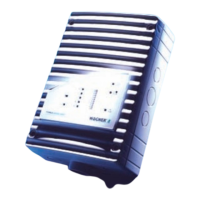TITANUS MICRO·SENS
®
Glossary
TMS_A_Glossar-e – Data: 01/09
C
Collective effect A phenomenon common only to air sampling
smoke detection systems. The sensitivity of the
individual detection points (smoke sampling
points), in contrast to point-type detectors, does
not remain constant. The sensitivity of the
individual air sampling points depends on the →
response sensitivity and the number of air
sampling points.
Collective fault
A non-differentiated, i.e. non-localisable →fault
signal which reports to a superior system.
Contact load Contact load describes the maximum load at
which a relay contact can be switched.
D
Detection line
Monitored transmission line (→primary line) to
which the smoke detectors are connected with the
→central fire panel.
Detection reliability This is the measure of reliability with which
phenomena are detected and reported and for
which a detection system is used.
Detection unit The sensitive detection unit is picking up smoke
aerosols.
Detector group
Collection of smoke detectors in a →detection line
for which a separate display is installed in the
→central fire panel.
DIL switch
Dual In Line; e.g. to set the response sensitivity, the
air flow sensor, the delay period for →alarm and
fault, to set the fault display to latched or non-latched
and to activate or deactivate → LOGIC·SENS.
Drift
Method of compensating detector soiling which
could change the quiescent signal by moving the
zero point.
E
Electromagnetic compatibility (EMC) This is the ability of an electrical or electronic
system to operate correctly in its electromagnetic
environment and have no adverse affect on this
environment.
End-of-line resistor
Element at the end of a →detection or control line
to check the line for broken wires and short
circuits.
F
Fault signal Signal indicating a deviation from the desired
value in the →smoke detection installation.
Fire load The fire load corresponds to the amount of heat of
all combustible materials of a fire section,
depending on its surface area.

